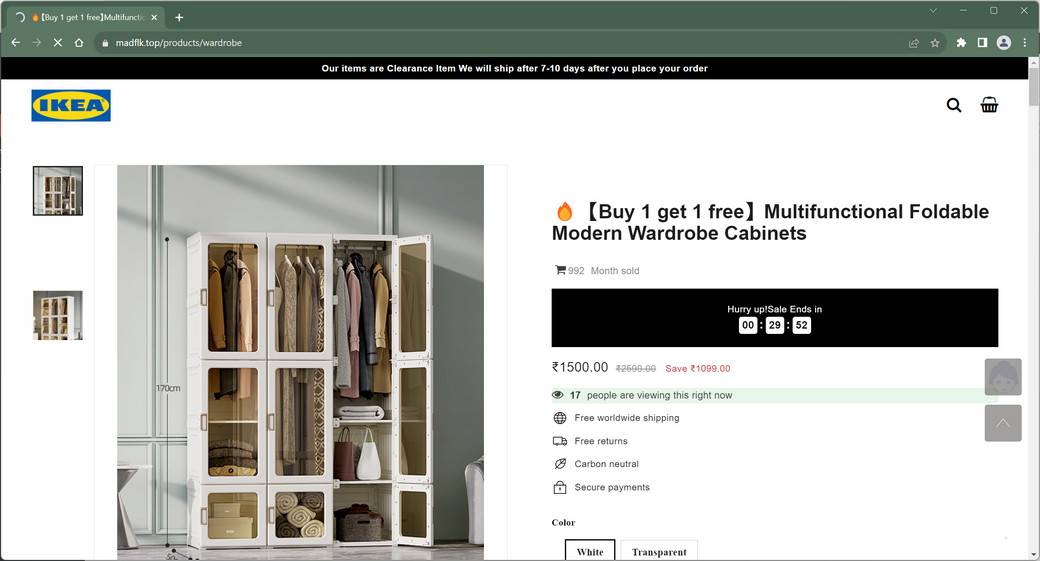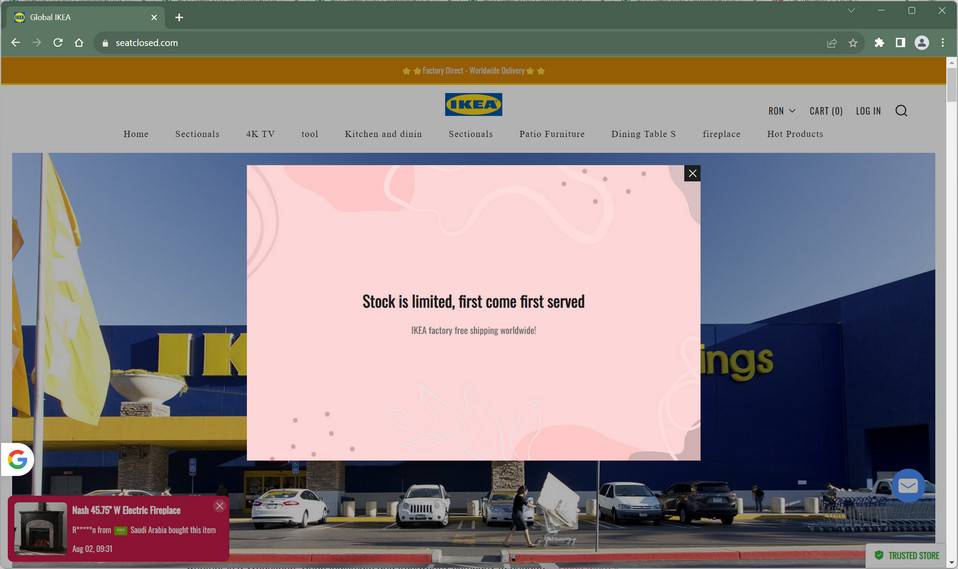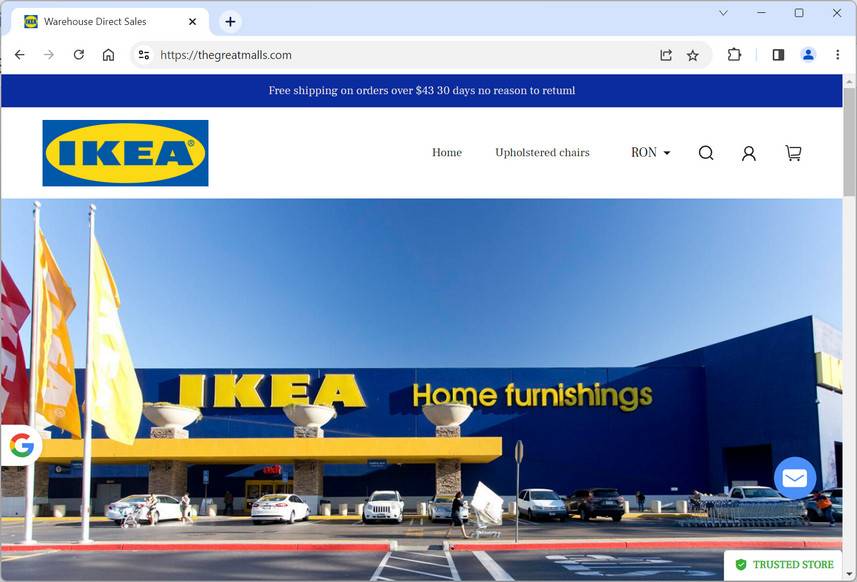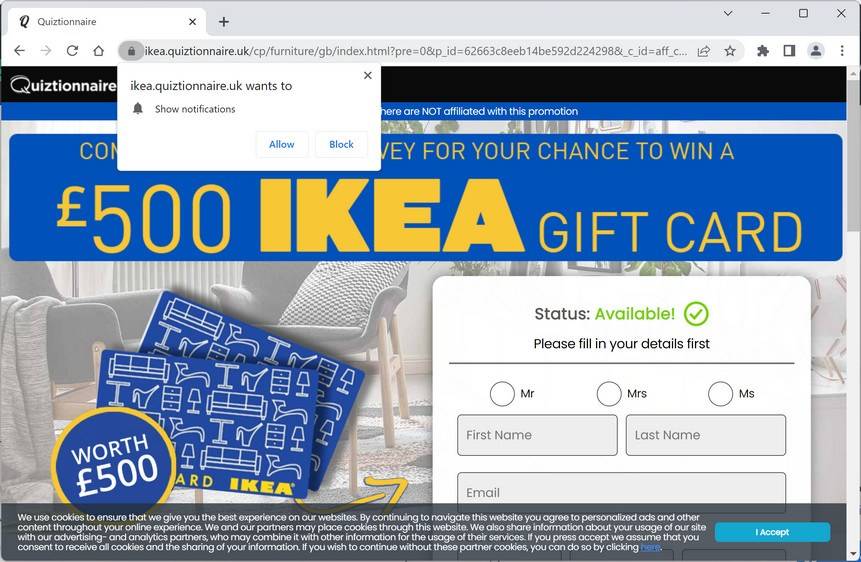IKEA has become one of the most popular home furnishings brands worldwide. However, IKEA’s global success has led to many elaborate fake shopping websites impersonating the company to scam shoppers.
This article will provide an in-depth look at how these fraudulent IKEA websites operate, the common tactics they use, how to detect these scams, and steps to take if you are victimized to limit the damage.
Overview of Fake IKEA Websites
There has been a surge of scam websites created that closely mimic the real IKEA website design and branding. These fake sites use names like “IKEAFurnitureShop” or “IKEA-OfficialStore” and lure in shoppers with ads touting unbelievable IKEA deals.
In reality, these copycat websites have no association with the real IKEA company. They will simply accept payments without fulfilling orders, or only send poor-quality counterfeit products if anything ever arrives.
After checkout, victims soon find their credit cards charged but end up receiving either:
- Nothing – Most frequently, no products are shipped after payments are processed. The order and money simply vanish.
- Counterfeits – Cheap knockoff furniture made with inferior materials in some cases. These will not match genuine IKEA items.
- Used/damaged items – Some report receiving furniture that is clearly used, broken, or defective.
- Completely wrong items – Many orders arrive with random products totally unrelated to what was ordered.
These fake sites also harvest users’ personal information during checkout for potential identity theft or resale on the dark web.
Tactics Used by Fake Sites to Deceive Customers
These fraudulent IKEA websites rely heavily on slick presentation, savvy marketing techniques, and the brand’s reputation to trick users. Some of the tactics include:
Highly Realistic Website Designs
Great effort goes into closely mimicking the real IKEA website’s look, feel, images, and navigation to appear as a legitimate IKEA retailer.
Search Engine Optimization & Pay-Per-Click Ads
Scam sites aim to rank high in search results through SEO and pay-per-click ads for terms like “IKEA official site” or “IKEA furniture sale”.
Fake Customer Reviews
Some feature fictitious 5-star reviews praising their service and furniture quality to build trust and credibility as a retailer.
Bait-and-Switch Tactics
Ads promise huge IKEA discounts, but orders never arrive, are damaged and used, or are totally different from what was ordered.
Ignoring Customer Complaints
They simply ignore or block any user emails or calls about orders never arriving to prolong the scam unchecked.
Detecting Fake IKEA Sites & Avoiding Scams
While their designs closely mimic the real site, there are ways to identify fraudulent IKEA websites:
Warning Signs of Fake Sites
- Ridiculously low prices – Far cheaper than normal IKEA prices at real stores and website.
- Generic images – Furniture photos appear copied, not original IKEA images.
- Missing contact details – No physical address, real phone number, just a web form.
- Grammatical errors – Text has numerous spelling/grammar mistakes.
- Recently registered – Domain registered very recently.
- Only credit cards accepted – No alternate payment methods allowed.
Shopping IKEA Furniture Online Safely
When buying online, follow these tips to find real authorized IKEA sellers:
- Only buy directly from IKEA – IKEA currently does not partner with any other online retailers.
- Verify URLs – Official sites will use “ikea.com” in domain names.
- Look for contact details – Real stores list a physical address and customer service numbers.
- Use credit cards – Never pay direct bank transfers without fraud protections.
- Avoid unbelievable deals – Discounts over 25% are highly suspicious.
Steps if Scammed by a Fake IKEA Website
If you ordered from a fake IKEA website and have been scammed, take these steps right away:
Report Fraudulent Charges to Your Bank & Payment Provider
Contact your bank and payment provider (credit card company, PayPal etc) to report the fraudulent charges. Request a chargeback if goods were not received. Provide order details, screenshots etc. as evidence.
Place a Fraud Alert on Your Credit Reports
Contact Equifax, Experian and TransUnion to place an initial 90-day fraud alert on your credit reports to help prevent potential identity theft.
Change Any Reused Passwords
If you reused the password on the fake site for other accounts, change your passwords immediately to be safe. Enable two-factor authentication where possible.
File Reports About the Scam Site
Submit reports about the scam website, order details, and business information to the FBI IC3, FTC, state attorney general, and Better Business Bureau to assist with investigations.
Warn Others About the Fake Site
Post reviews warning others about the fake IKEA site you encountered. Report their social media pages, listings, and ads pretending to sell real IKEA products. Spread awareness about new fake domains imitating the company.
Frequently Asked Questions About Fake Sites
How are scammers able to make so many fake sites using the IKEA name and logo?
Scammers exploit the largely complaint-driven trademark and copyright enforcement system. Until reported and legally pursued, they can quickly create convincing fake sites confusing customers.
Are the too-good-to-be-true discounts on fake sites actually lower than real IKEA prices?
Yes, absurdly low prices like 50%+ below normal retail values are a clear red flag. They use extreme discounts as bait since their real goal is obtaining payment and customer data.
What happens when I request a refund from fake sites after being scammed?
Fraudulent sites essentially disappear after receiving payments. Emails or calls requesting refunds or support are completely ignored or rejected by the scammers. There is no real customer service.
Can I still be scammed on sites that accept PayPal payments?
Unfortunately yes – fake sites can still process PayPal payments by using stolen or fraudulent accounts not actually verified to them. PayPal does favor buyers though in claims.
How can I tell if customer reviews on an IKEA site are fake or real?
Scam sites rely heavily on fake reviews. Check for broken English, overly positive ratings, and if images match reviewed products. Authentic sites will have more balanced real reviews.
Does IKEA offer any legitimate coupon codes or discounts?
Yes, IKEA does provide some genuine seasonal promotions, discounts, and coupon codes on its official website and stores. However, coupons claiming over 25% off are highly suspicious – verify codes on IKEA’s site.
The Bottom Line
Shoppers need to exercise caution when searching for IKEA furniture online to avoid getting scammed by the many convincing fake retailer websites now prevalent. Look for the warning signs outlined here, thoroughly verify sellers, and use secure payment methods to protect your information and money. Report any suspected fake IKEA sites to shut down these scammers.














